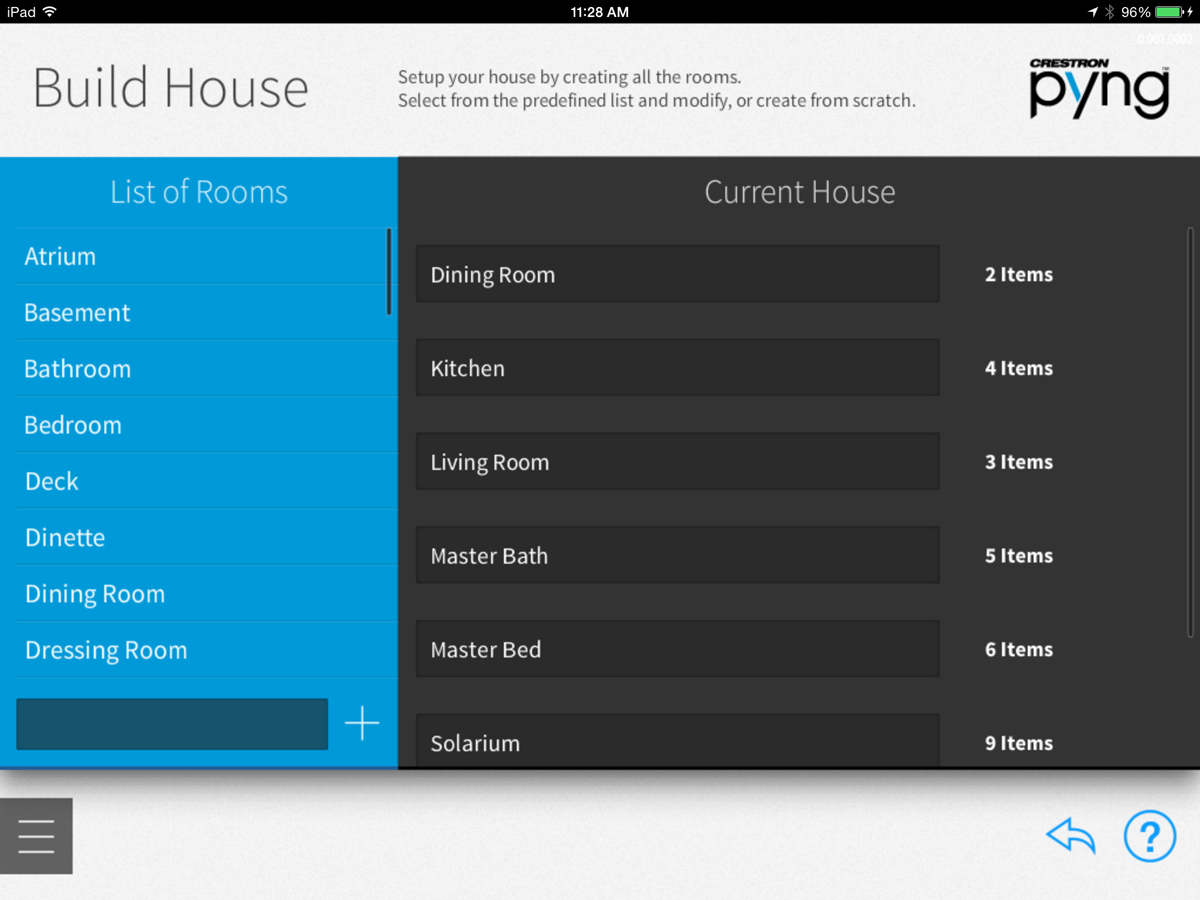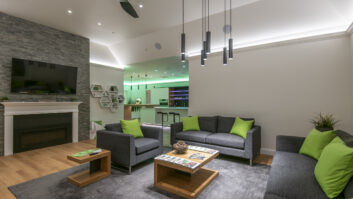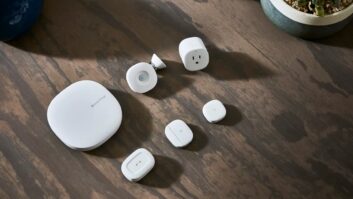
Denver – A new home-automation app and hub developed by Crestron will reduce installation time and boost margins by letting installers use tablets to configure existing home-automation products equipped with the company’s proprietary infiNET EX wireless mesh-network technology.
Crestron’s Pyng app for iPads and the Pyng hub enable configuration and control of lighting products, motorized shades, thermostats, occupancy sensors, and door locks equipped with infiNET EX. The infiNET EX products connect via RF to the Pyng hub.
With the app and hub, the products make unnecessary the sophisticated programming expertise currently required of home-automation systems that must be programmed via laptop, the company said.
The app also enables remote monitoring and remote changes in system reconfiguration, in turn reducing the number of truck rolls. The system sends immediate reports to dealers when, for example, an occupancy sensor’s battery runs low, a device is unplugged, or an in-wall dimmer is broken. Installers can remotely reconfigure a system from a tablet without going back to the install site.
The UI is simple enough for consumers to use to change which lights/shades are in a lighting scene or add events without calling an installer, Crestron said.
Customers could also use their tablet — or an Apple smartphone — to control the system, which provides real-time feedback to the mobile device. The system can also be controlled from existing in-wall Crestron touch screens.
The system launches with an iOS app, but an Android app “is not far away,” said Evan Ackmann, lighting and energy technology manager.
The retrofit-focused infiNET EX products are targeted to luxury homes through the company’s existing dealer base. The app and hub aren’t intended to broaden distribution beyond current Crestron dealers, the company added.
The app and hub, available at the CEDIA Expo for shipping, promises to change the way dealers go to market and interact with customers, said marketing VP Sean Goldstein.
Because the system does not require sophisticated programming experience, more employees will be capable of going out into the field to configure systems, enabling installers to do a lot more jobs more quickly, he said. That will also help improve profitability, as will the need for fewer truck rolls, he said.
Customers will also be happier because they can get their system installed faster and can make changes to the system themselves without waiting for someone to come to the house, he added.
The system will also encourage existing Creston A/V installers to add lighting and shades to their portfolios, said Tom Barnett, marketing communications director. And it will help dealers take on bigger jobs because of the efficient configuration process.
Besides raising margins, the system can also make installations more affordable, said Ackmann. “If it took two weeks to do one system, you can now do five per week, and the dealer doesn’t need a certified programmer with a laptop.”
Besides controlling devices equipped with infiNET EX, the Pyng hub connects via RS-232 to security systems. The Pyng app will be updated to control wired Crestron devices at a later date.
Customers who have Crestron home entertainment systems could use the Crestron app to control their home entertainment systems, given that Crestron Pyng capabilities embedded within the app use the same Pyng SmartObject technology that enables Pyng capabilities from Crestron touch screens. Customer can control everything (Pyng and other Crestron devices) from both the app and their Crestron touch screens. The only difference would be that the Crestron home entertainment system would still be programmed using Crestron’s SIMPL Windows program, the company said.
To simplify Pyng configuration, the apps require “as few taps as possible,” and they use common words such as “build your house,” Ackmann said. Every screen has a help button, which triggers a video that explains what the installer should be doing at a particular step.
The app and hub also tell installers whether they’re trying to configure a scene that conflicts with another scene.
Wireless devices must be paired actively by tapping a button on each device to identify which room it’s in and then naming it in the app.













